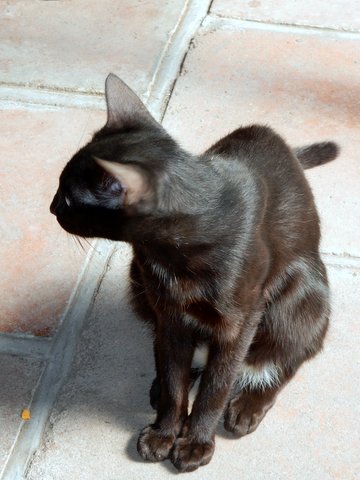The pictures are harder to take than the words. The words you can skip over; the pictures take you by the throat. All of my boyhood in Southern Rhodesia, now Zimbabwe, came surging back to me with choking sorrow when I saw press pictures of Zimbabwean children digging through the roadside gravel, in the hopes of finding kernels of maize–corn in American English–that may have blown off passing trucks.
When hunger stalks Africa, maize is more important than gold–the difference between living and dying. It is eaten in several ways; even the stalks are chewed in the way Latin Americans chew sugar cane. Mostly, it is made into a stiff porridge called sadza.
Some of my earliest memories of the vital importance attached to maize go back to when I was nine years old and was awarded the job in our household of measuring the weekly maize ration to each employee. By law, every man–and domestic helpers were mostly men–received 15 pounds of maize each week.
My job was to watch the precious ground maize—grits to Americans–weighed out of 100 lb. sacks into smaller sacks. The weekly weighing was a jolly time, with much joking and laughing (and you have not laughed, until you have laughed in Africa) while the meal was dispensed, weighed with a scale hung on a tree limb.
This weekly ceremony, together with the distribution of stewing beef, was symptomatic of everything that was right and wrong with life in colonial Africa. It was humanitarian; it was generous; and it was patronizing. The amount of meal far exceeded the daily consumption of one person and was designed, although this was not mentioned, to feed more than one hungry mouth. It was a government-abetted welfare; paternalism in action.
I have often thought about this conscious food distribution from the better-off whites to the poor blacks as less an act of racism than of British class snobbery: noblesse oblige in the colonial context. It was the same instinct that caused the viceroy of India to pretend to find work for 5,000 people at his palace in New Delhi.
Much of the meal ration found its way to extended families in the townships or to peddlers who came around on bicycles. None of it went to waste. The classic meal, eaten with little variation, was sadza, which is a dumpling that diners shape with their hands and dip into a stew made ideally with meat, but sometimes with other protein-rich ingredients like beans, or termites and caterpillars, which were harvested as delicacies. I ate a lot sadza with various stews, but the caterpillars were beyond me.
The question I have most often been asked is, “What was it like in Rhodesia?” I have never had a good answer except to say that it was like living in a good London suburb, but with a back story of indigenous people who came and went in our lives without really registering. British author Evelyn Waugh described this phenomenon as far back as 1937, when he wondered at the “morbid lack of curiosity” of the settlers for the indigenous people. He might have been told that it was the selfsame lack of curiosity that his characters in “Brideshead Revisited” had about the workers in the rest of England.
At this passage of time, it is almost possible to defend the British in Rhodesia. Their greatest gift, I sometimes think, was not democracy, law, literacy or religion, but the golden maize they brought with them in l890, which replaced rapoco, a low-yield grain grown in the region. Maize was produced in such abundance in Zimbabwe, before President Robert Mugabe destroyed the commercial farms, that it was exported throughout southern Africa.
Now the breadbasket is empty; and children sift through roadside gravel for corn kernels blown from trucks. Would I could fix my scale to a tree and weigh out a plentiful measure for those children, who are no older than I was, when I was the quartermaster in another time.

 Follow
Follow
Leave a Reply